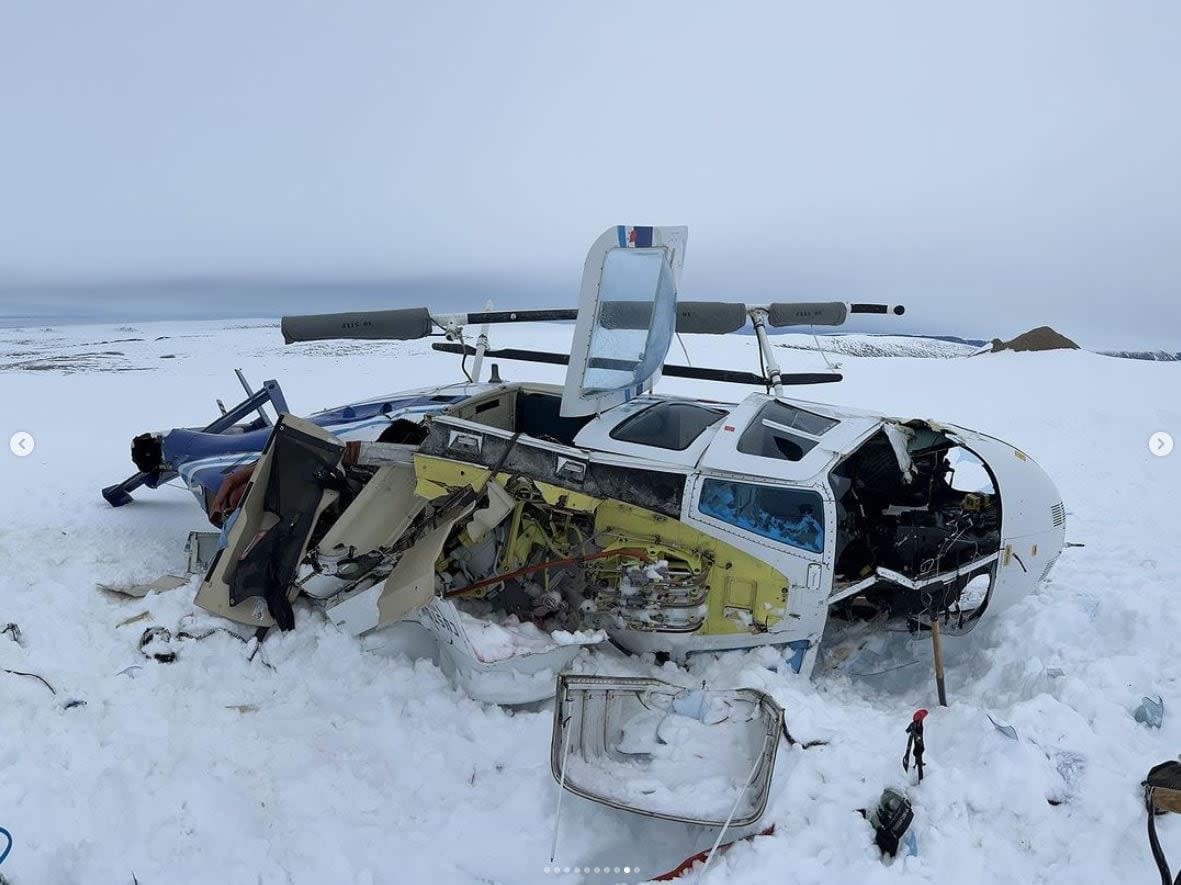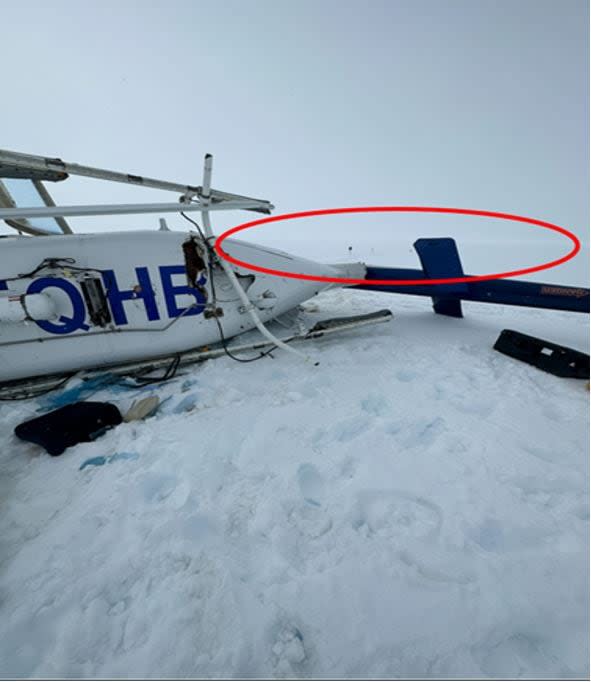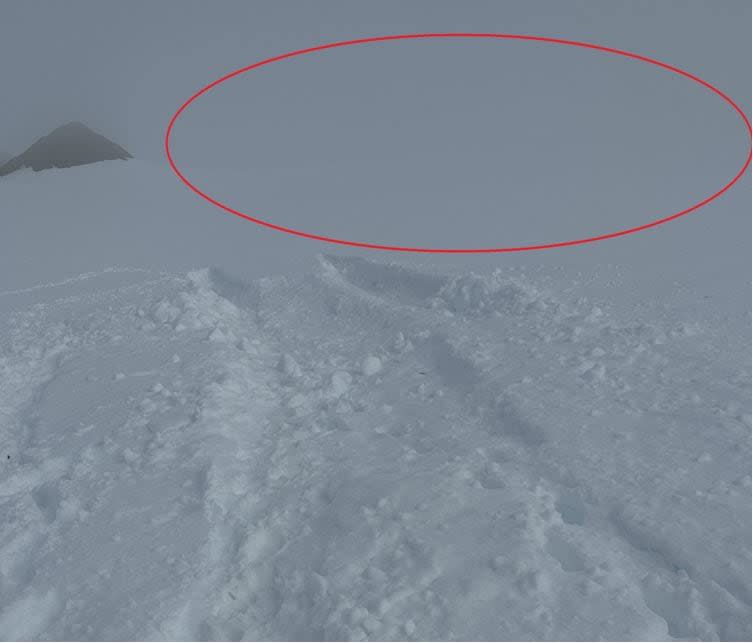Flat light a factor in Nunavut helicopter crash that injured 3 people, TSB says

Flat-light conditions contributed to the crash of a helicopter on Devon Island, about 100 kilometres from Grise Fiord, Nunavut, last summer, according to report released today by the Transportation Safety Board of Canada (TSB).
The incident happened on June 28, 2023, and involved a Bell 206L helicopter carrying a pilot and two passengers. The three people on board all survived the crash with injuries.
According to the TSB report, the helicopter left Truelove Inlet, on Devon Island, for a glacier on the Devon Ice Cap. The passengers were working on a survey as part of the Polar Continental Shelf Program.
When the aircraft arrived at the glacier, the pilot determined that its surface definition was unsafe for landing and turned back.
The pilot made a second attempt about 45 minutes later. Approaching the glacier, the pilot reduced the helicopter's speed and used rocks as a visual guide to approach.
The helicopter then collided with the terrain.

A photo taken shortly after the helicopter went down in June 2023. The Transportation Safety Board says the aircraft hit the terrain while flying in flat-light conditions. ((Transportation Safety Board of Canada) )
"Once the helicopter had passed the rocks being used as visual reference, the pilot lost visual reference to the surface in flat-light conditions," the TSB report says.
The helicopter hit the snow-covered surface and was destroyed. The passengers and pilot received minor injuries.
"In these conditions, the pilot can become disoriented without clear references to the surface and may turn or descend into terrain," the report reads.
After the crash, one of the passengers used a satellite phone to call the Polar Continental Shelf Program in Resolute Bay, Nunavut, and the three people were rescued two and a half hours later.

This photo shows where the pilot crashed in flat-light conditions, according to the Transportation Safety Board of Canada. ((Transportation Safety Board of Canada) )
Flat light training
As a result of the incident, staff at Manitoba-based Custom Helicopters Ltd., the company that operated the flight, received training on flying in flat light. It also issued Arctic meteorological training for pilots flying in remote locations.
The TSB report also found that the pilot did not have phone or internet access to check the weather before taking off.
The report does not make any recommendations, but lists safety messages for pilots.
"Flying in flat-light conditions can affect a pilot's ability to detect and correct any changes in the aircraft's attitude, altitude, or airspeed. The degradation of visual cues can result in a loss of situational awareness and possible collision with terrain," the report says.

